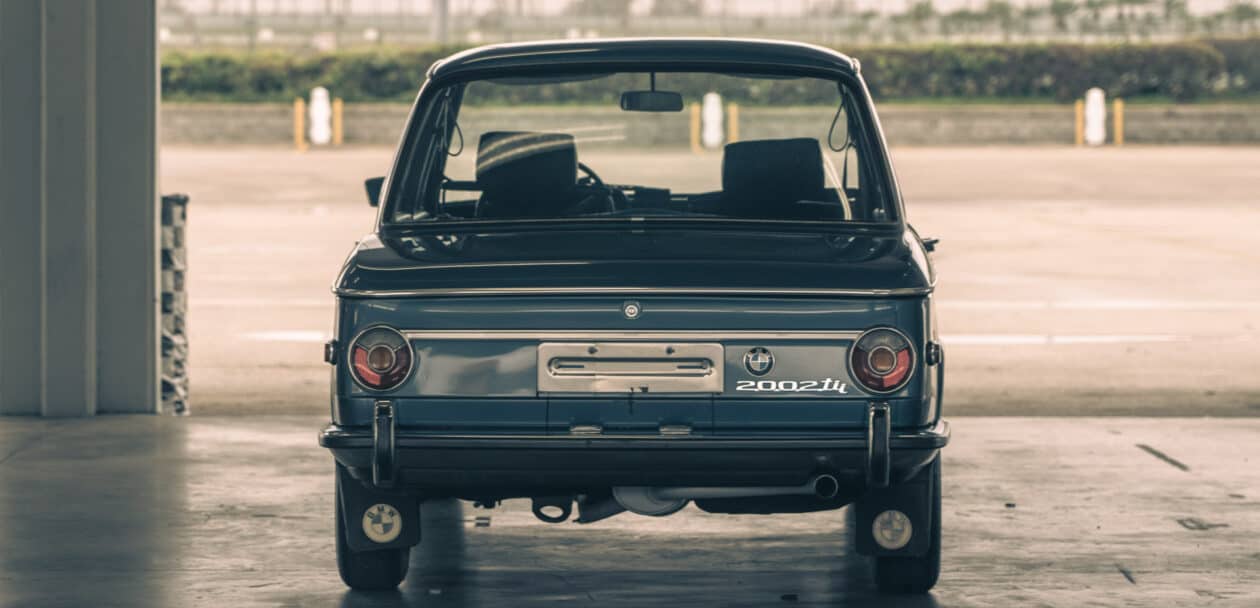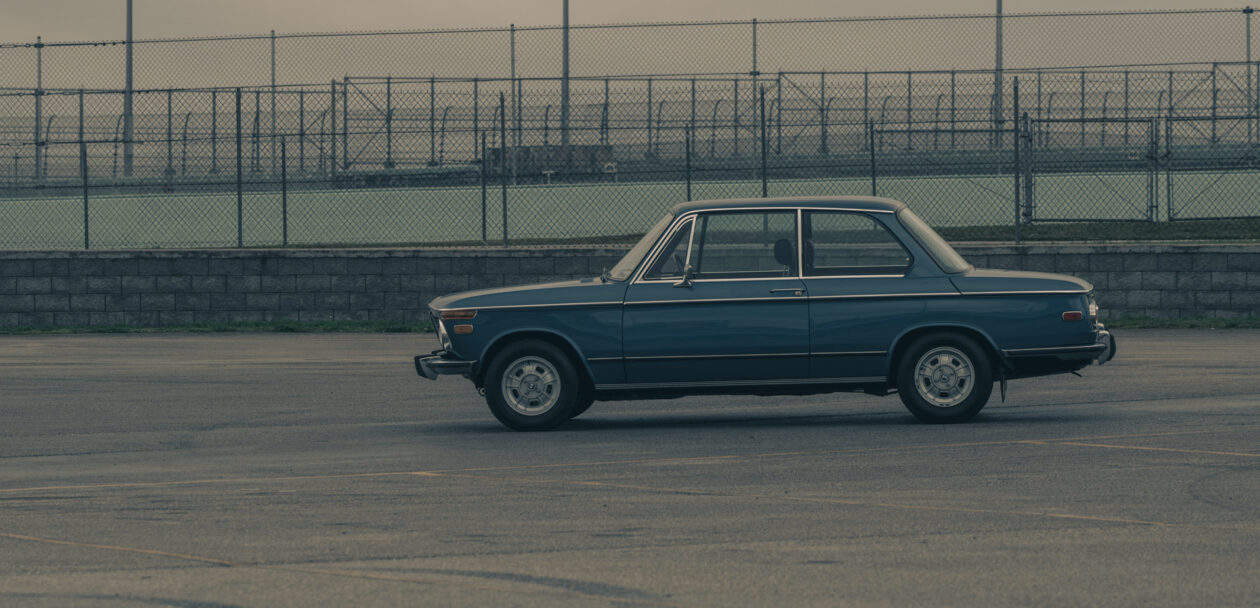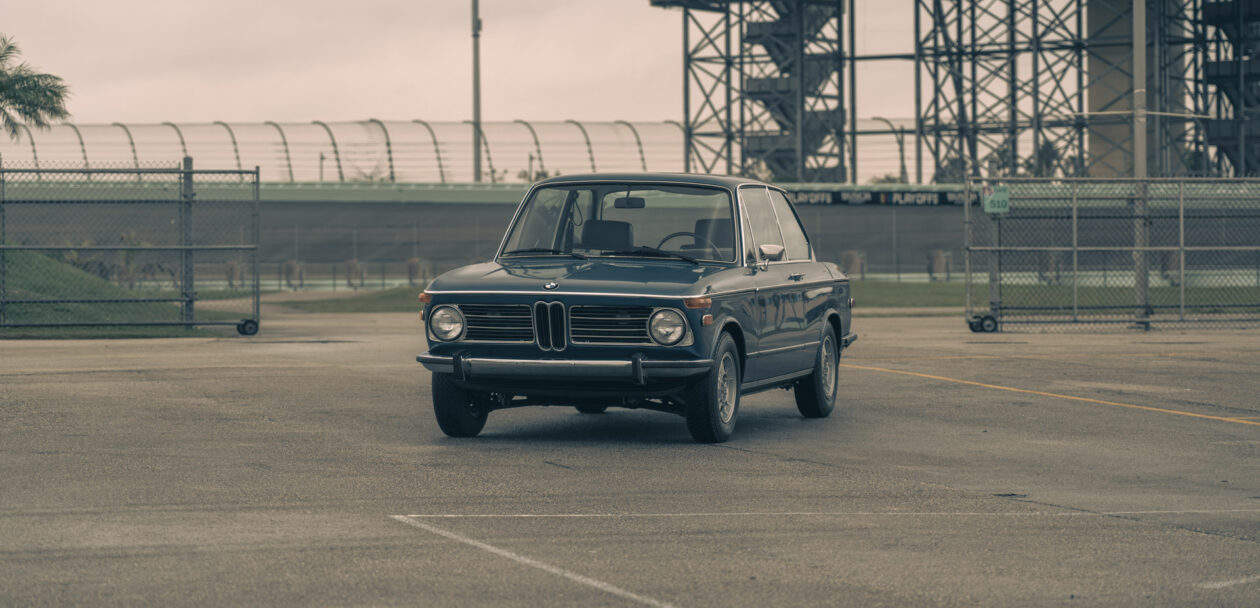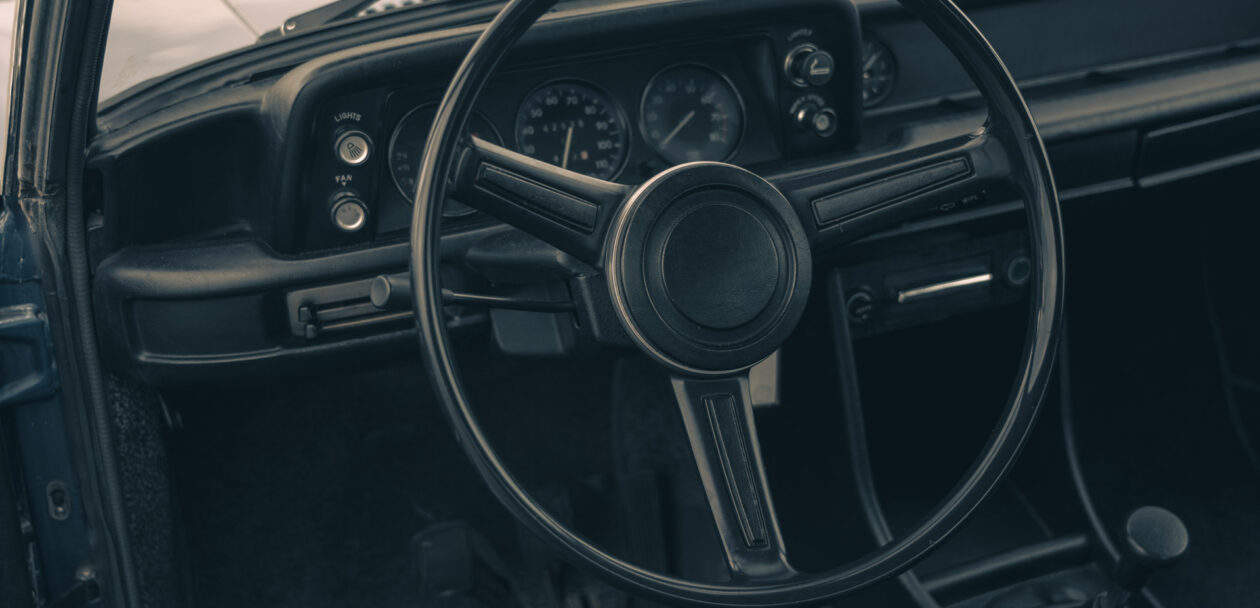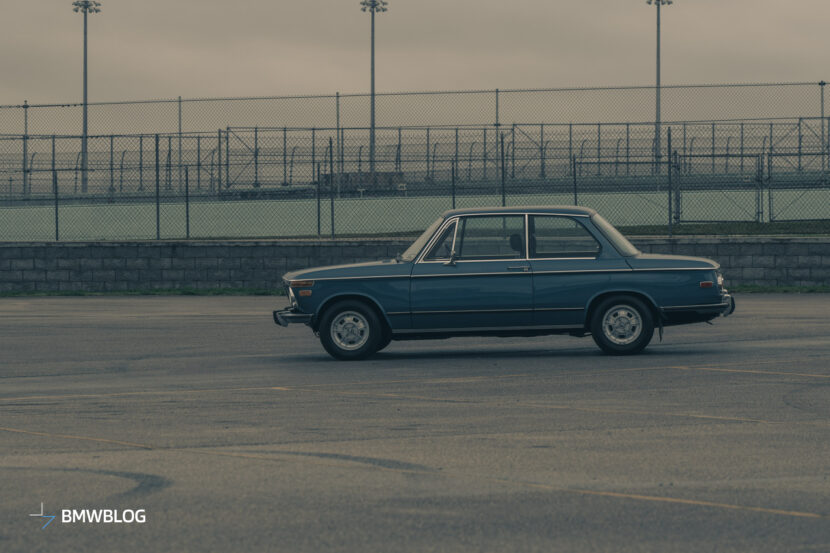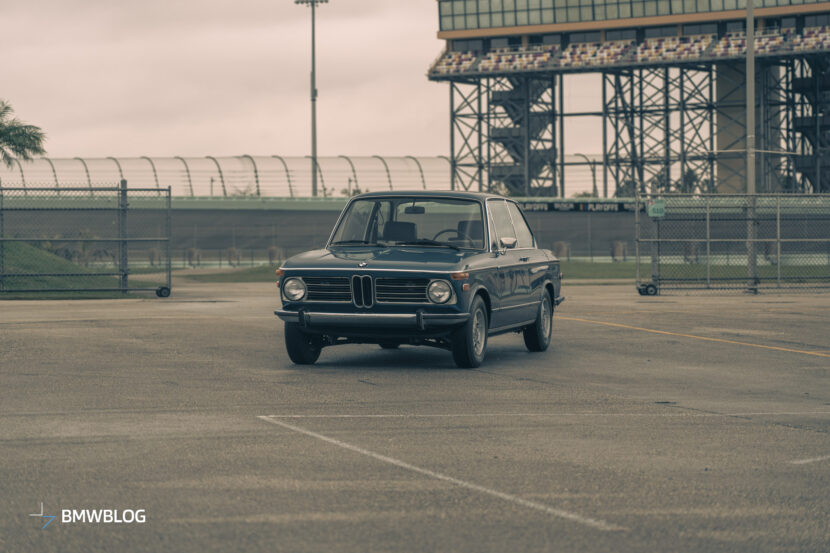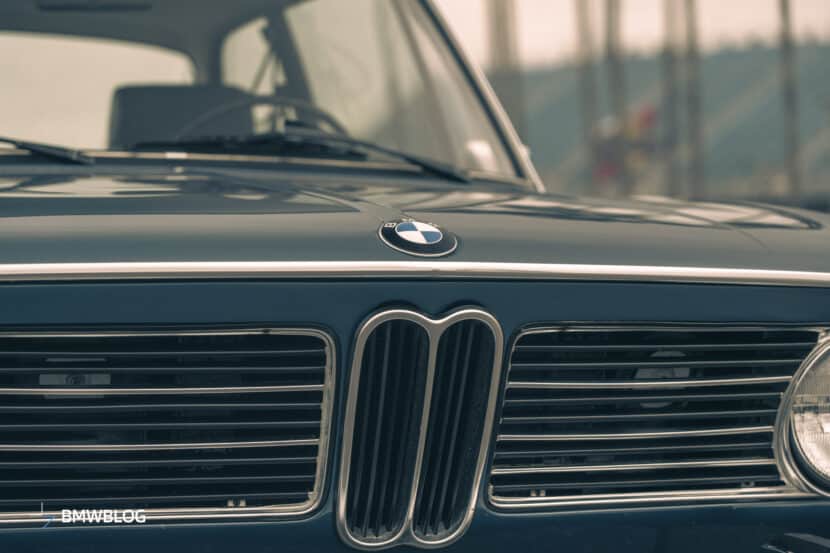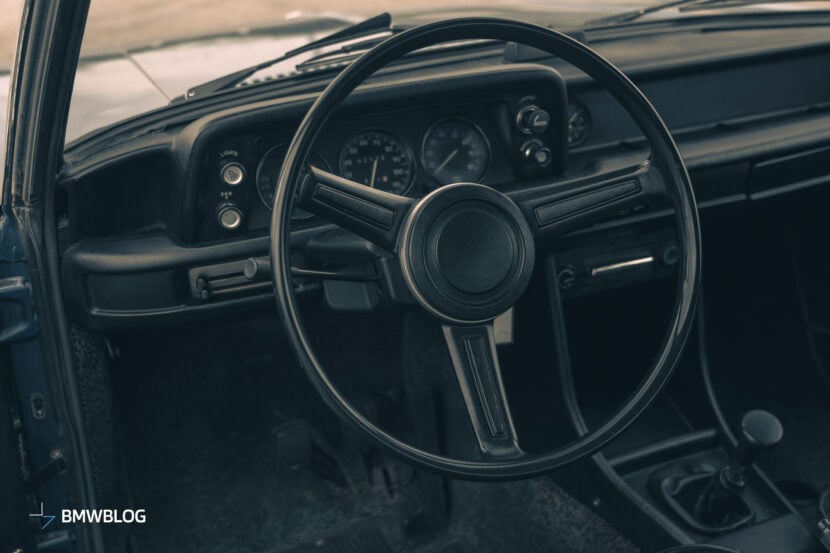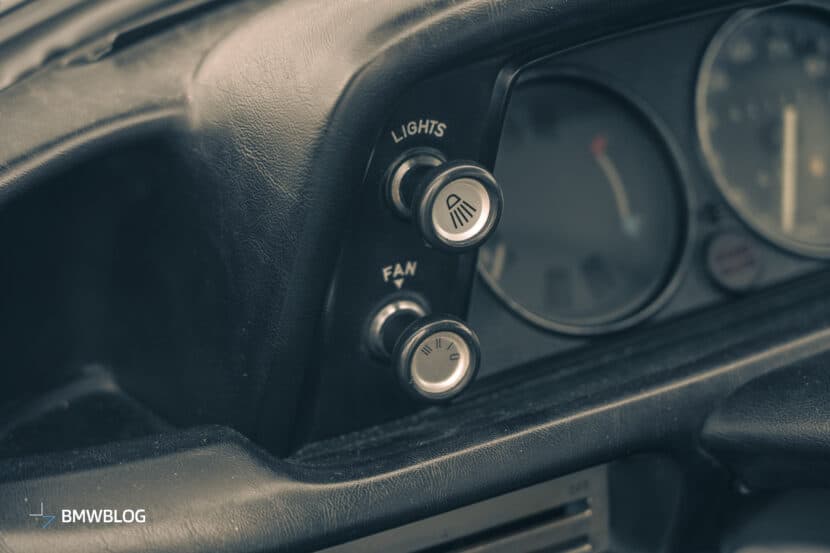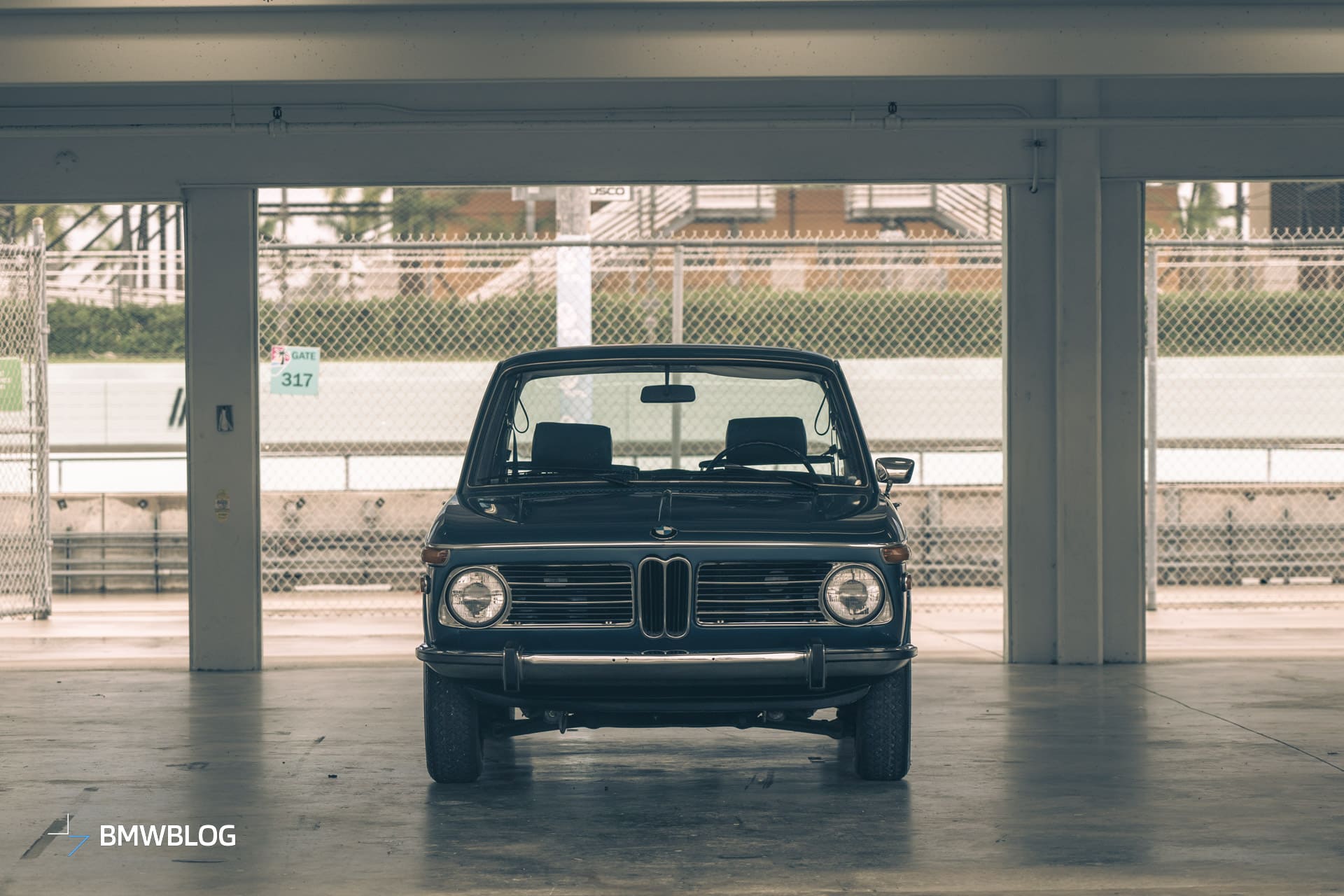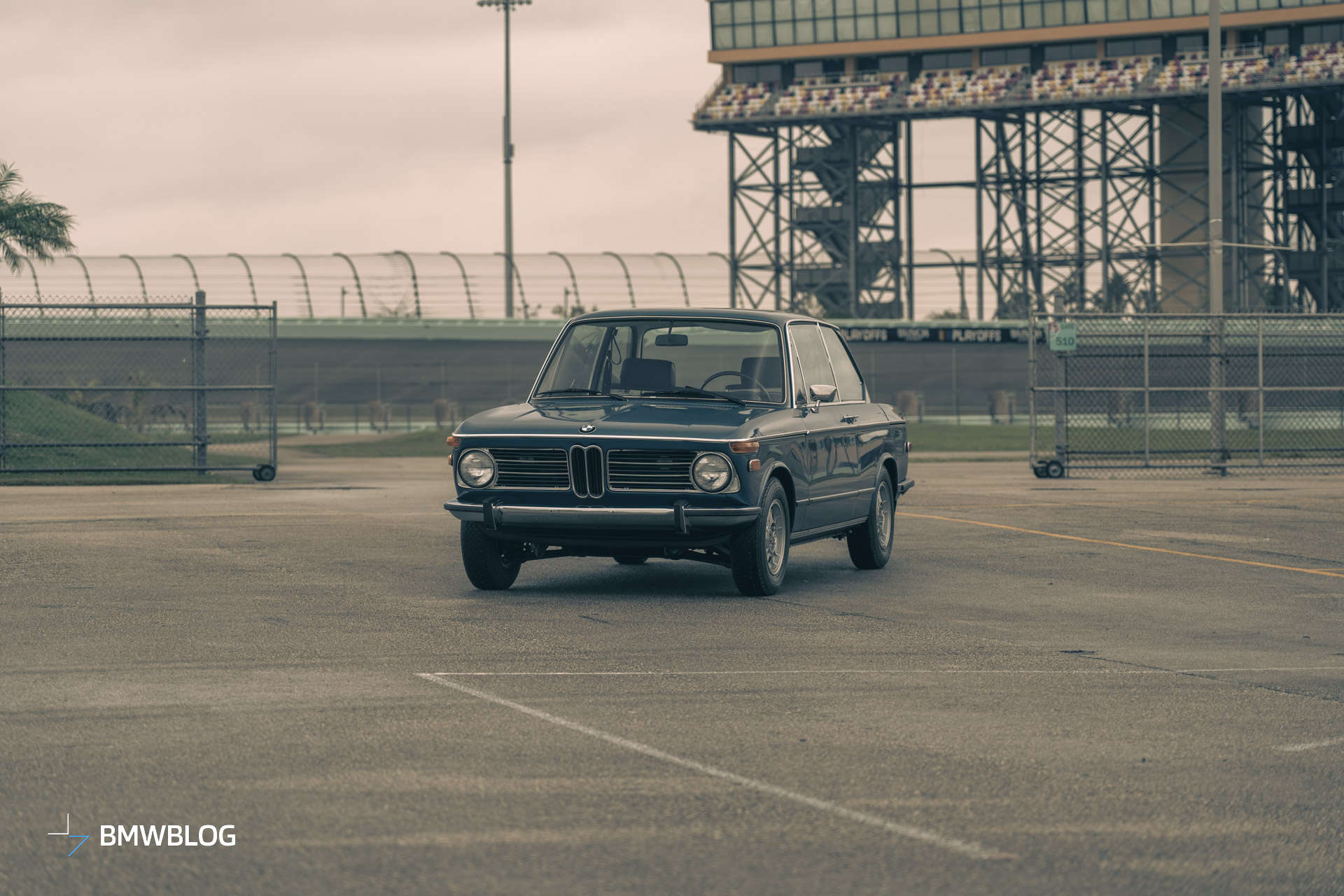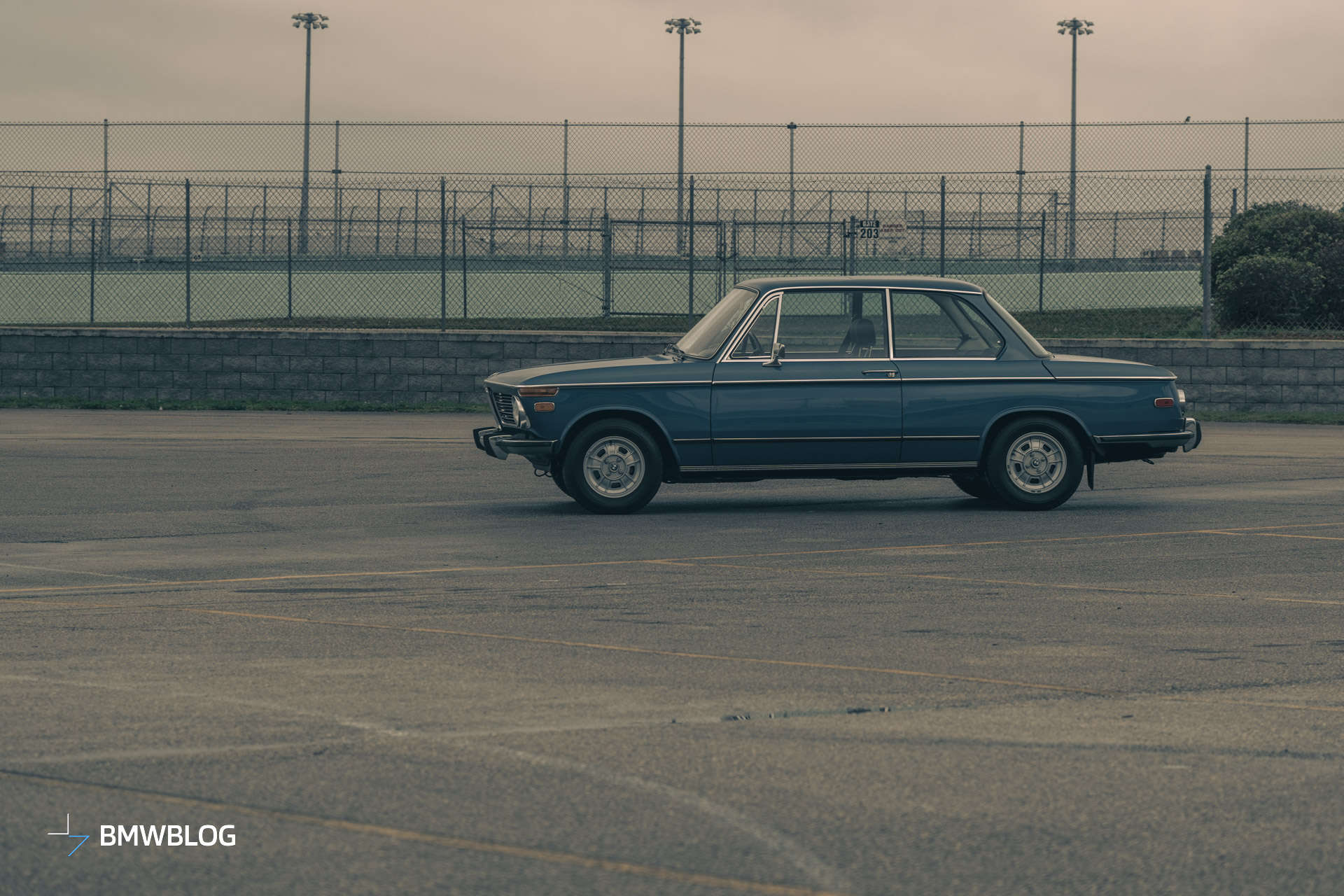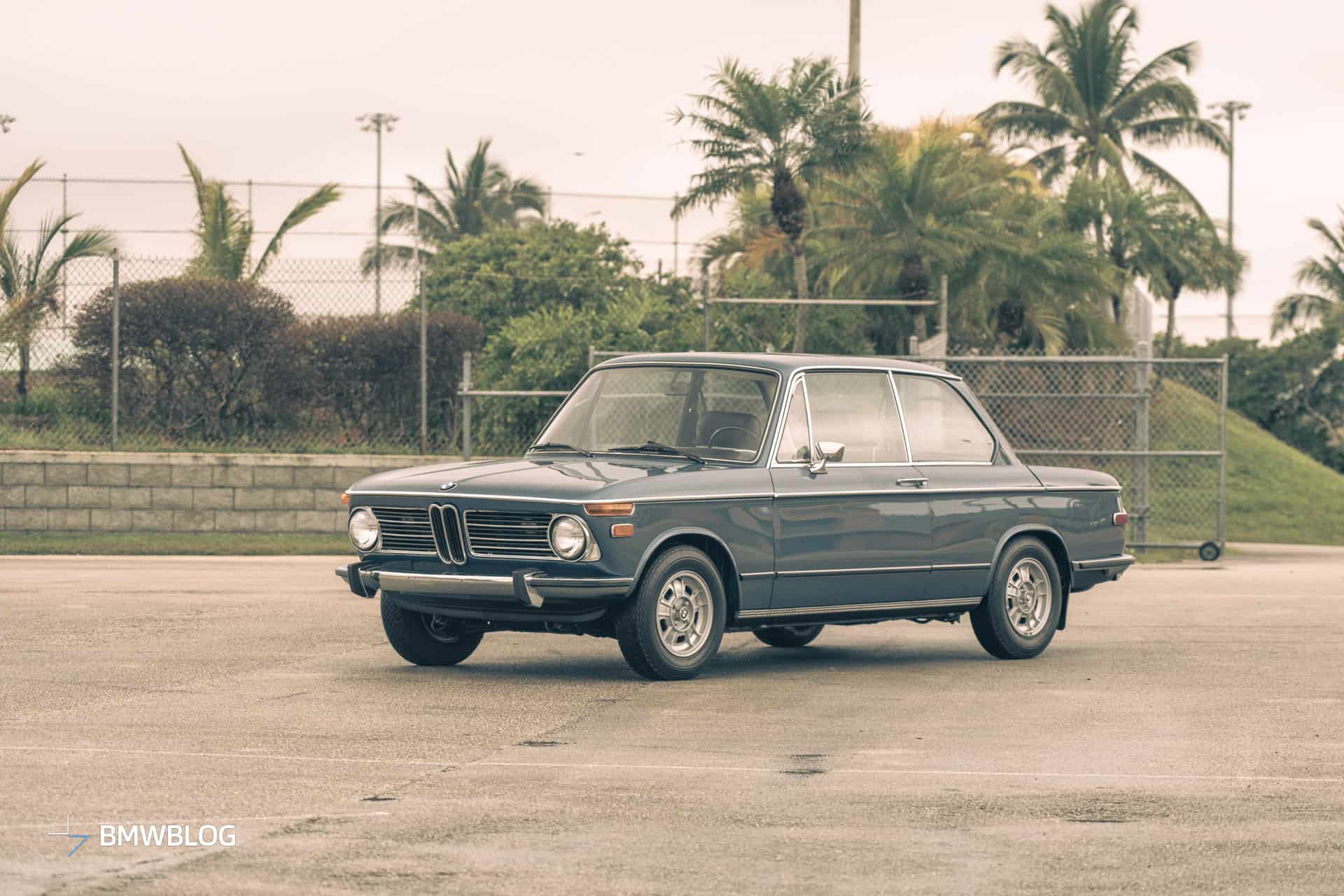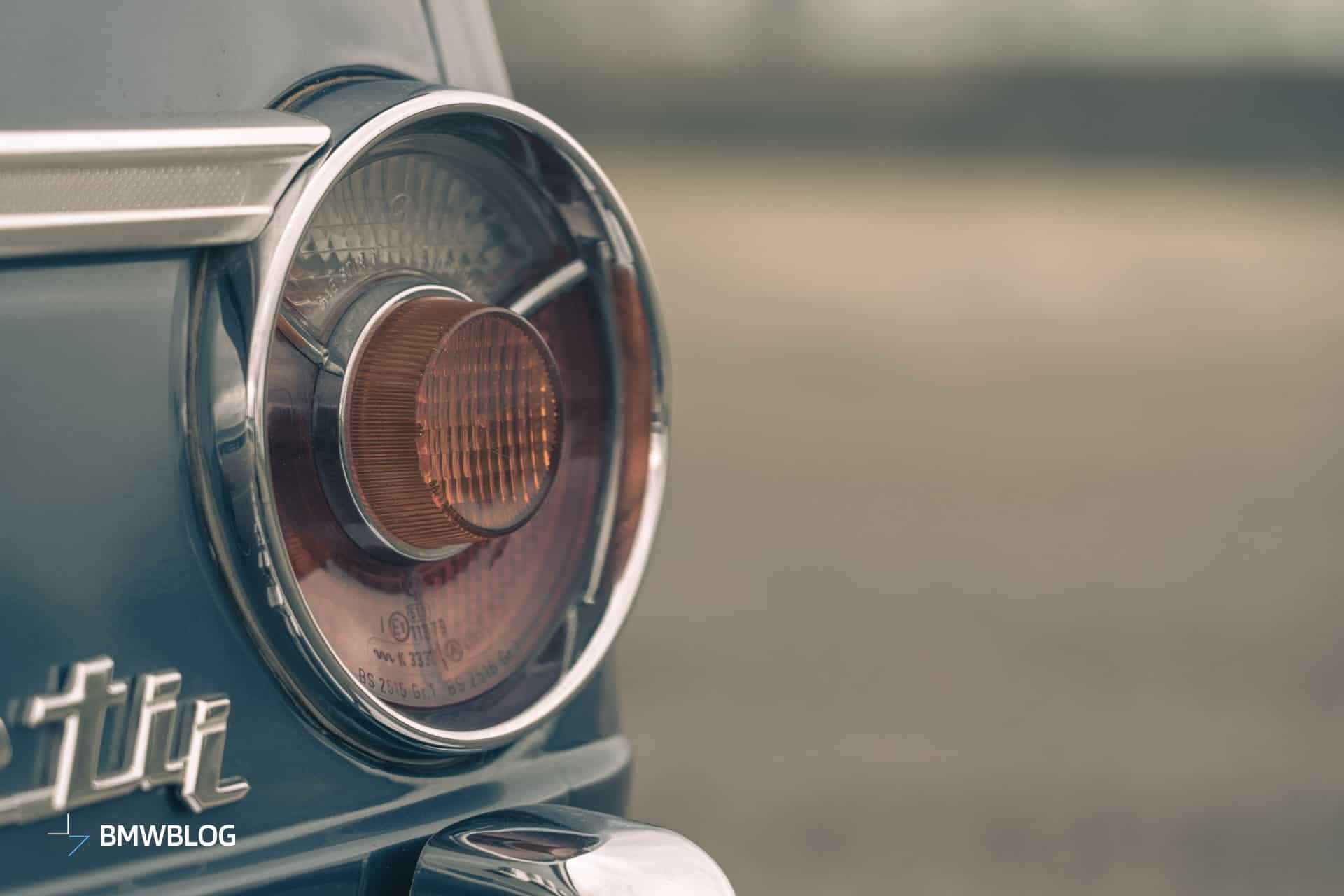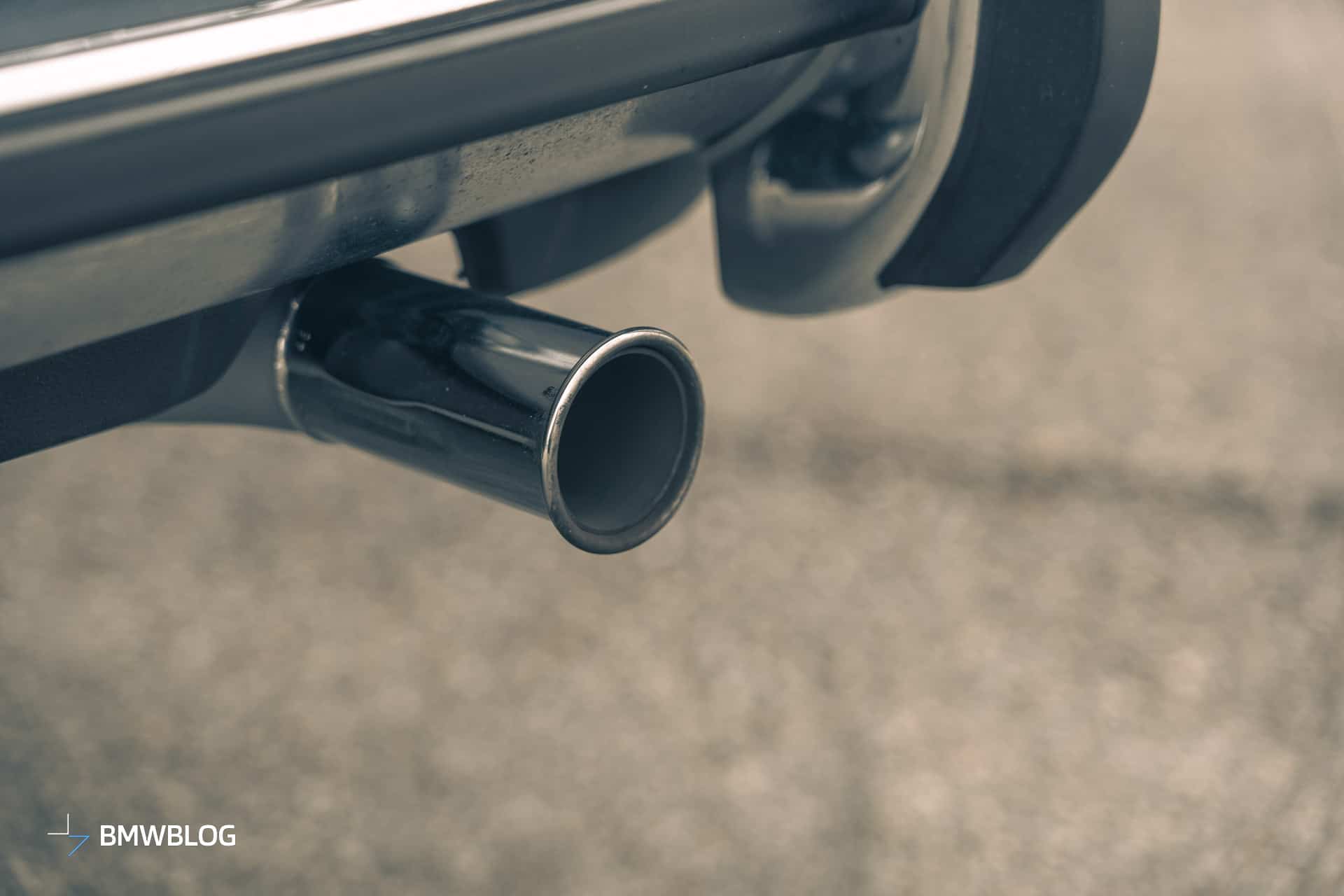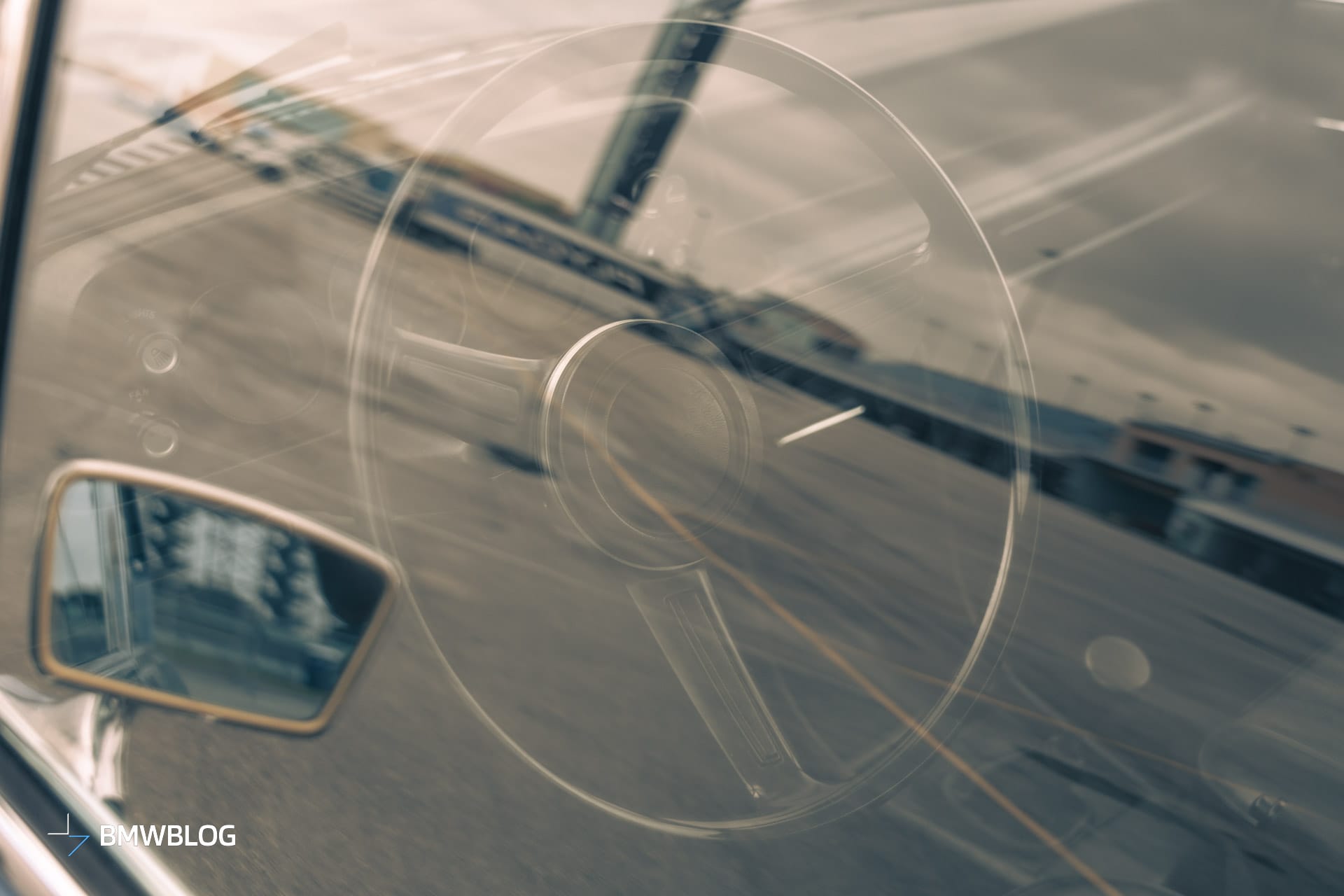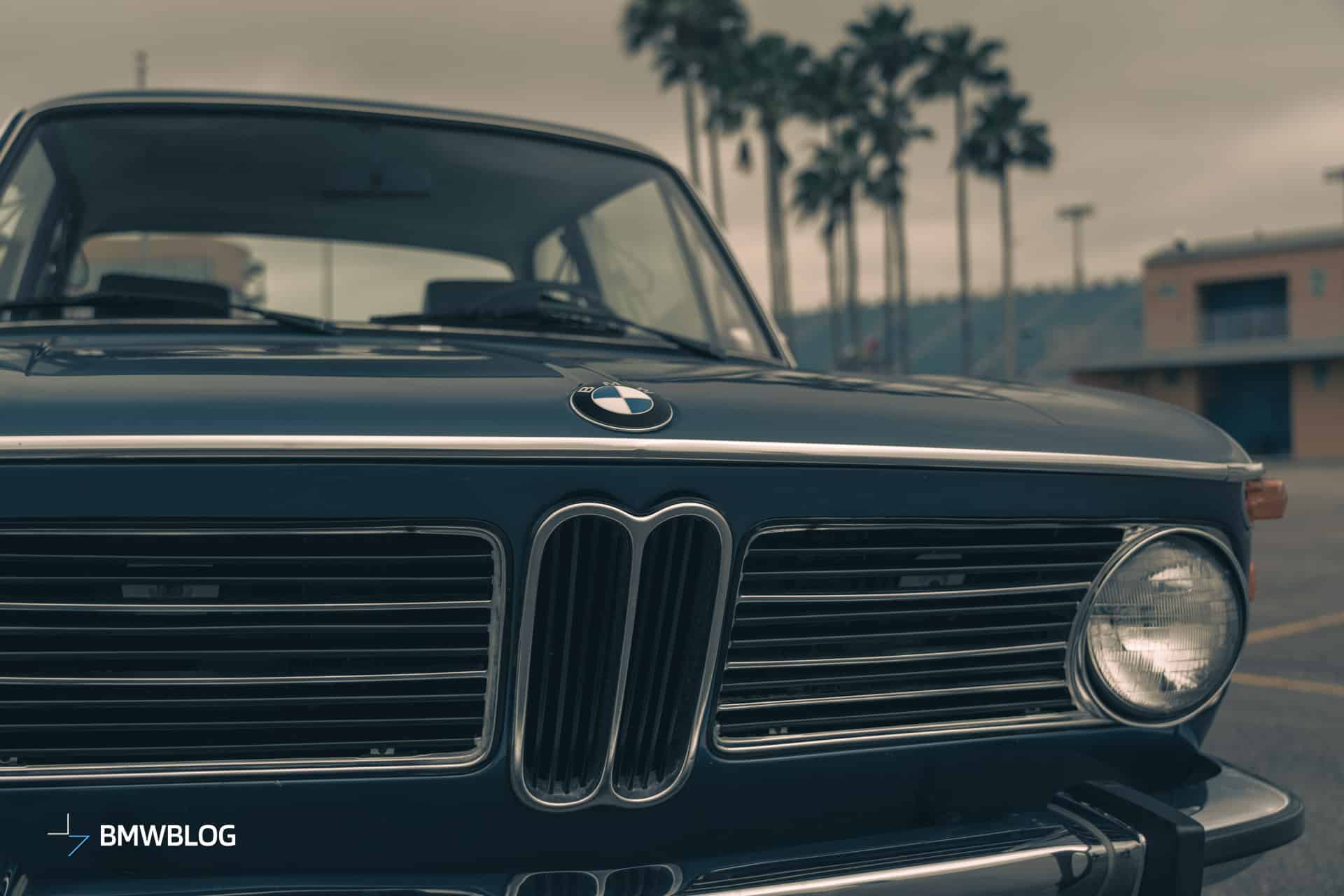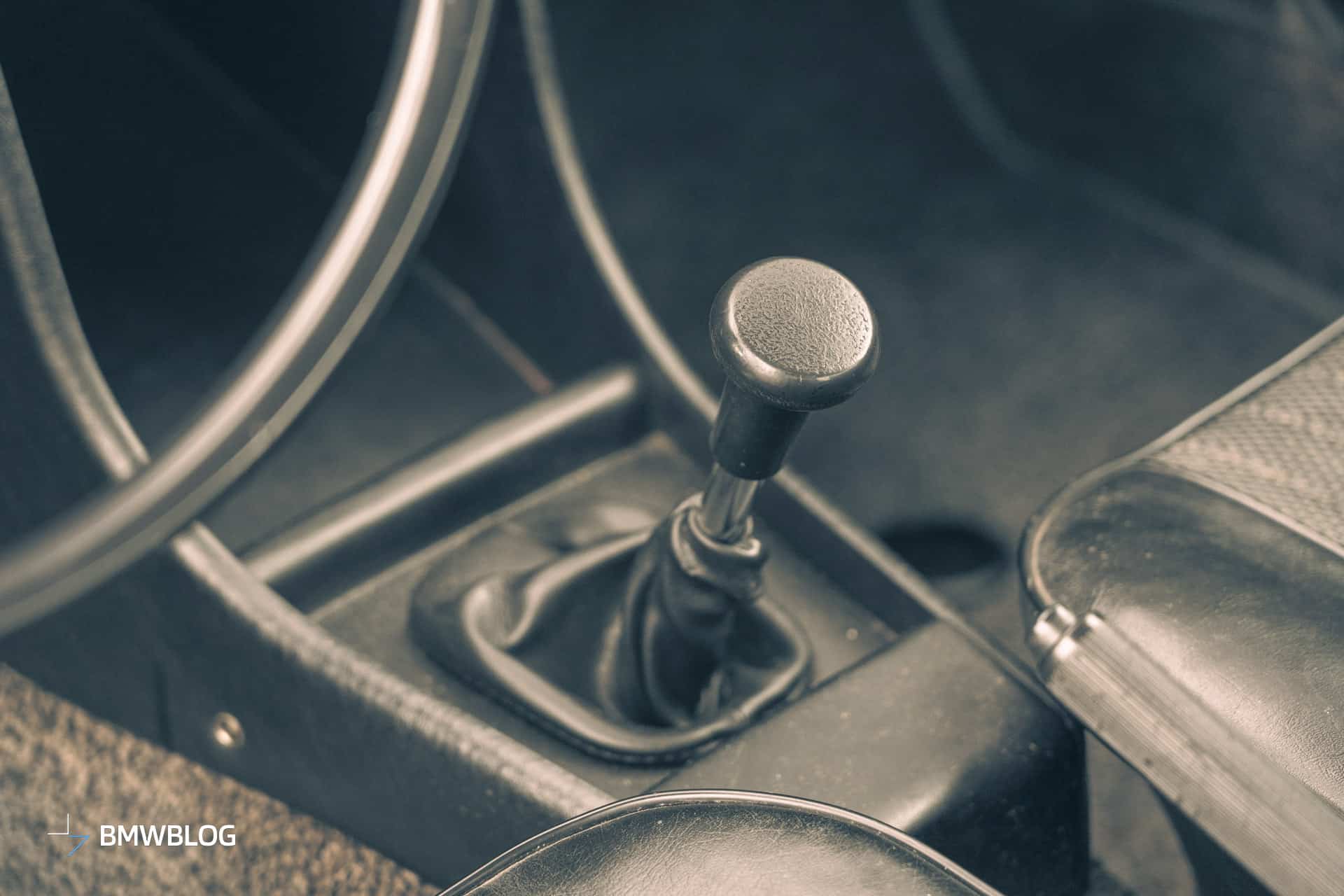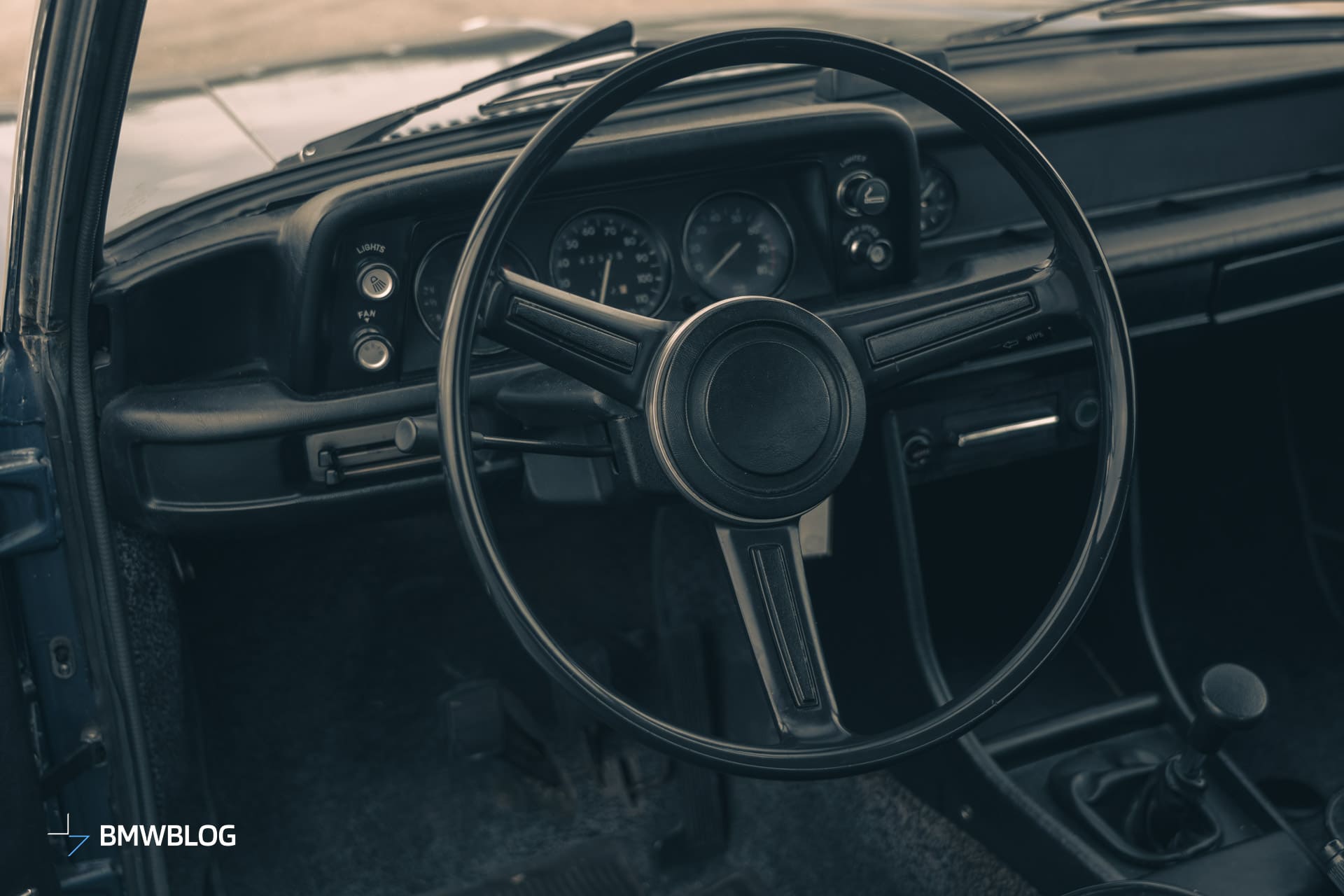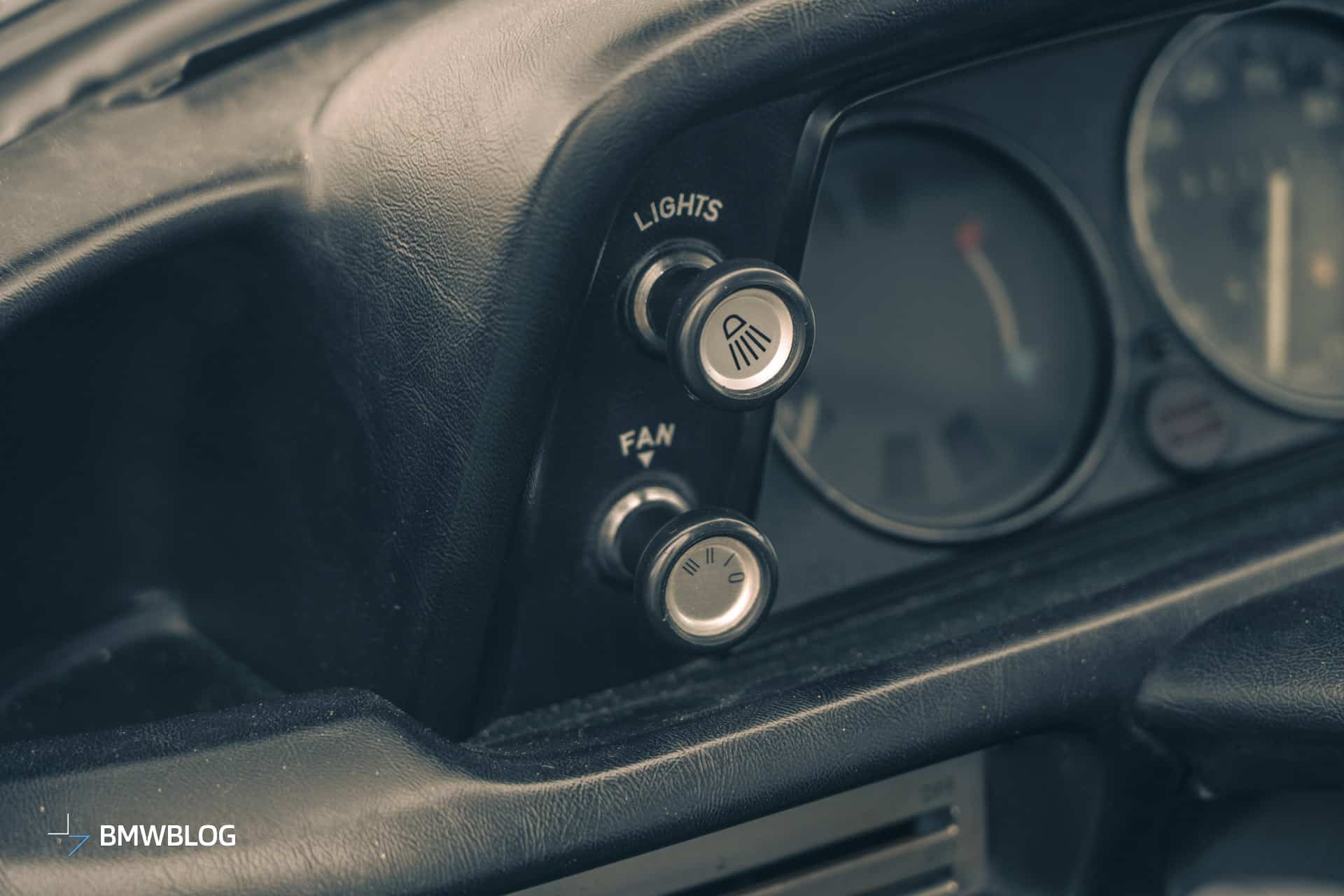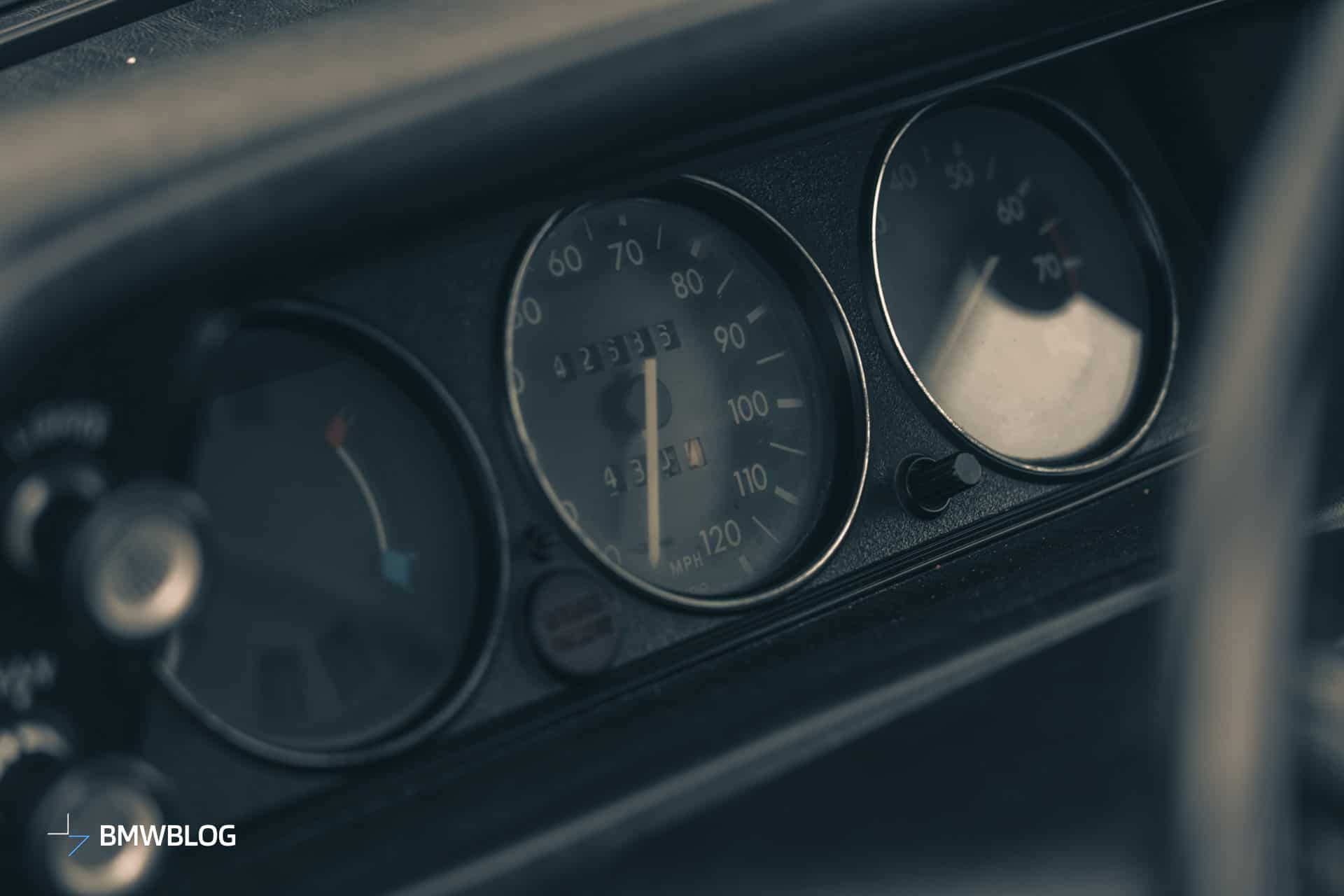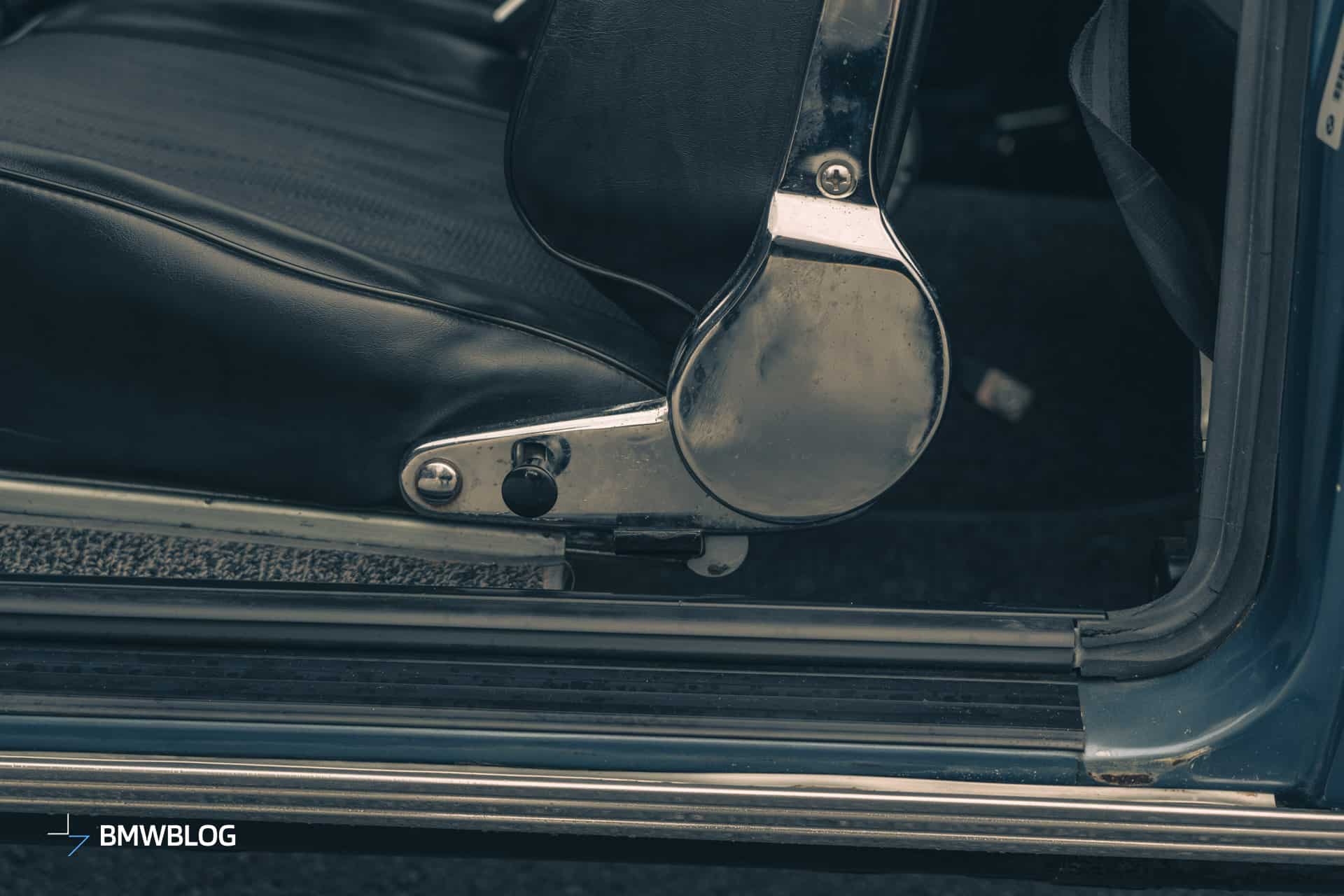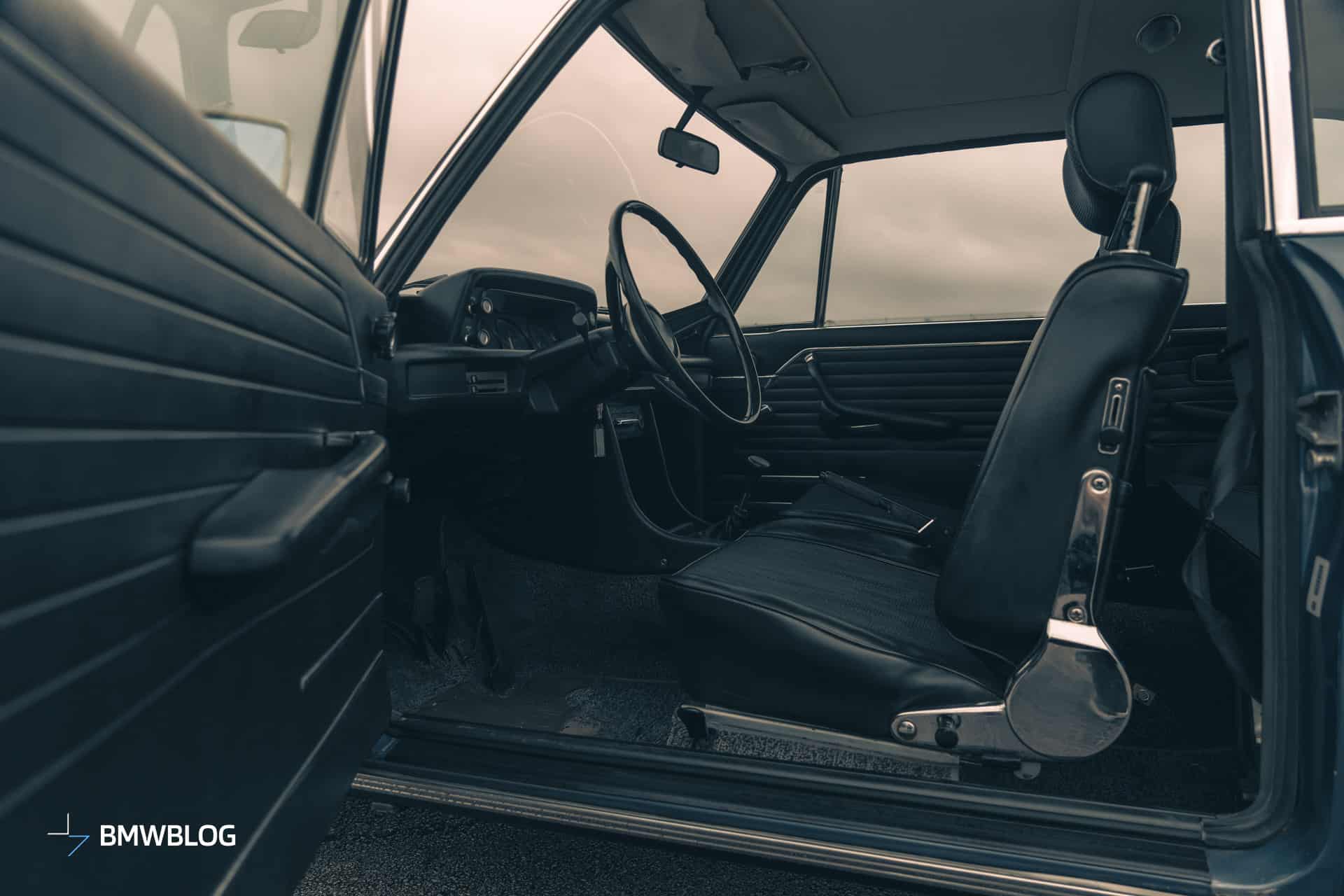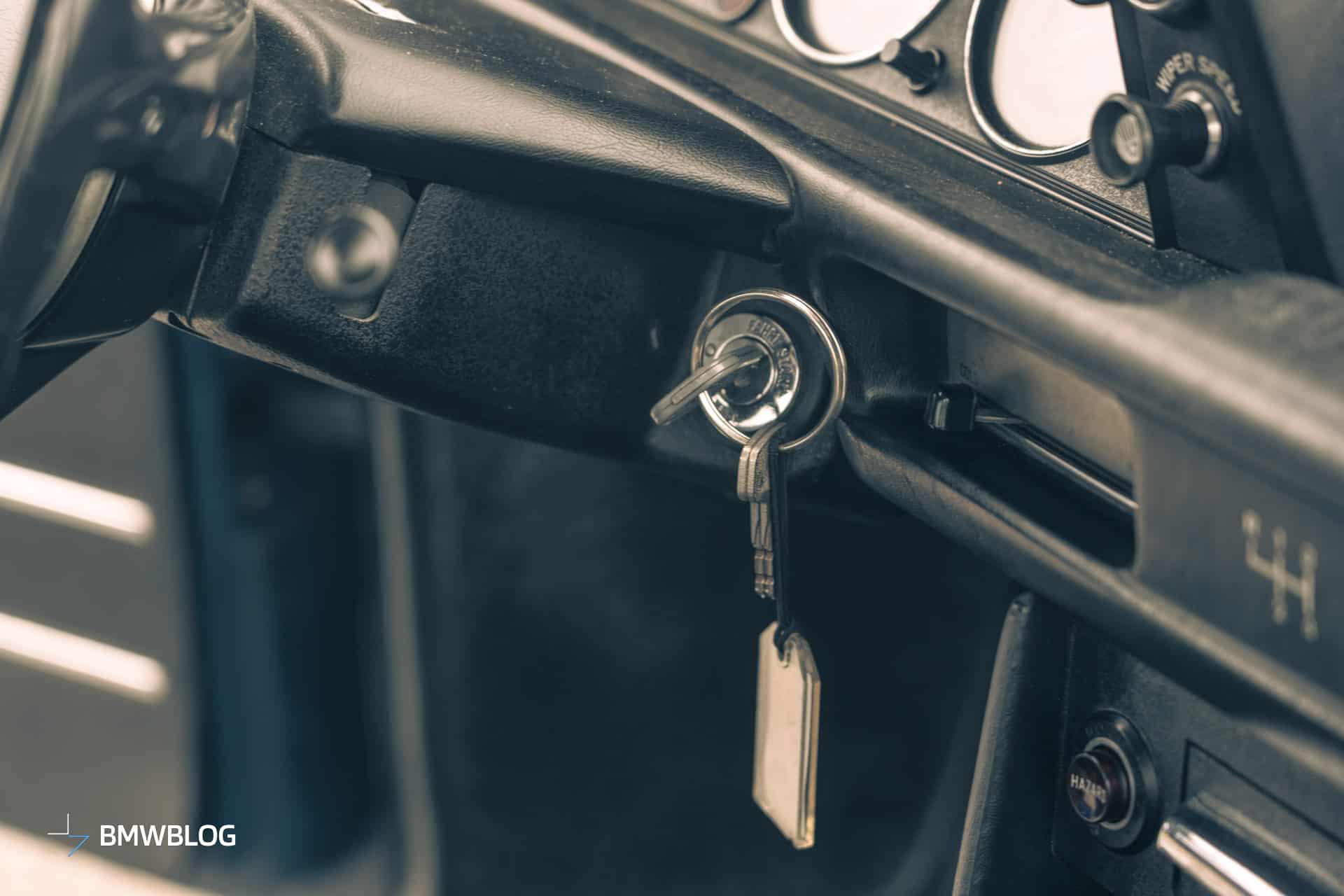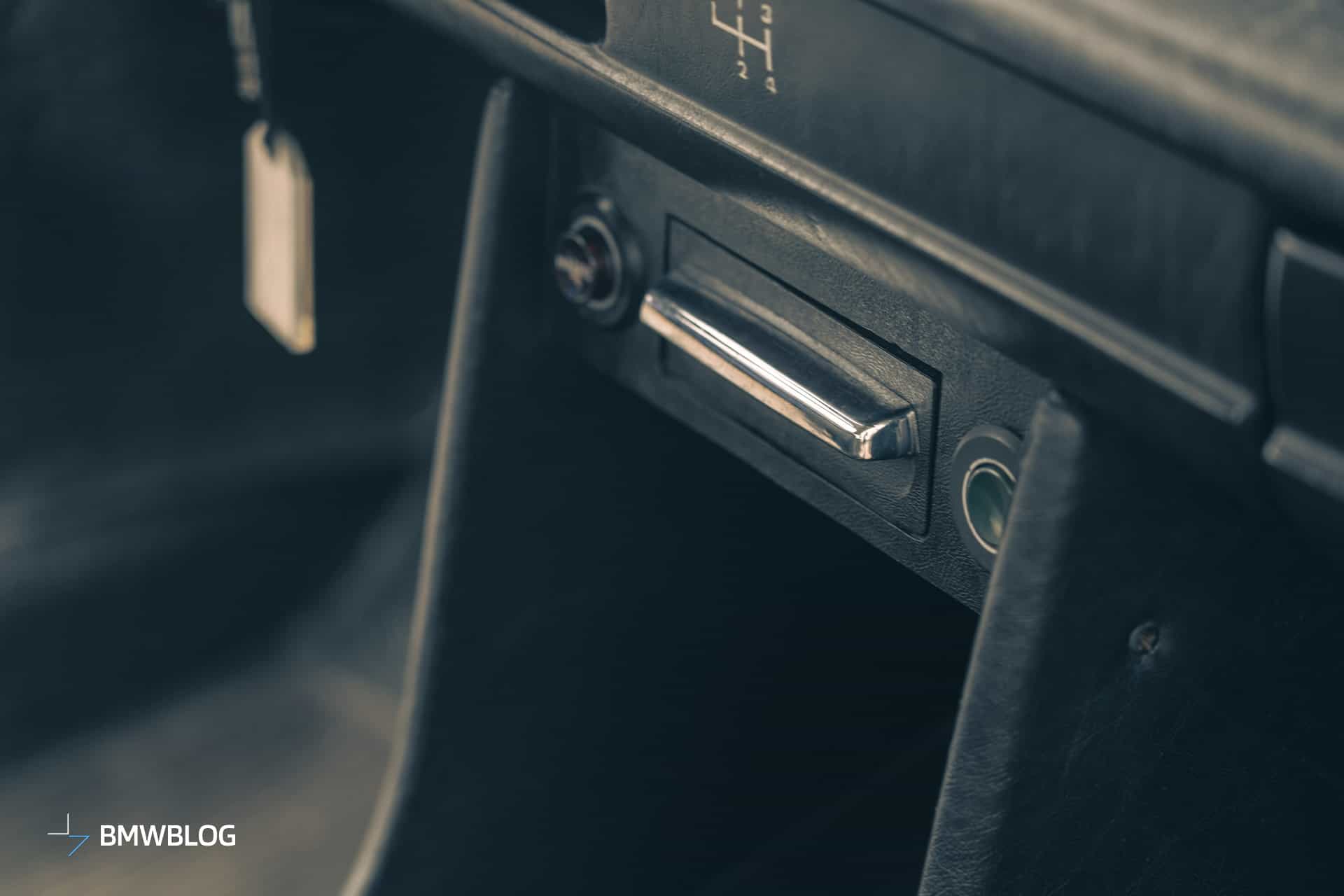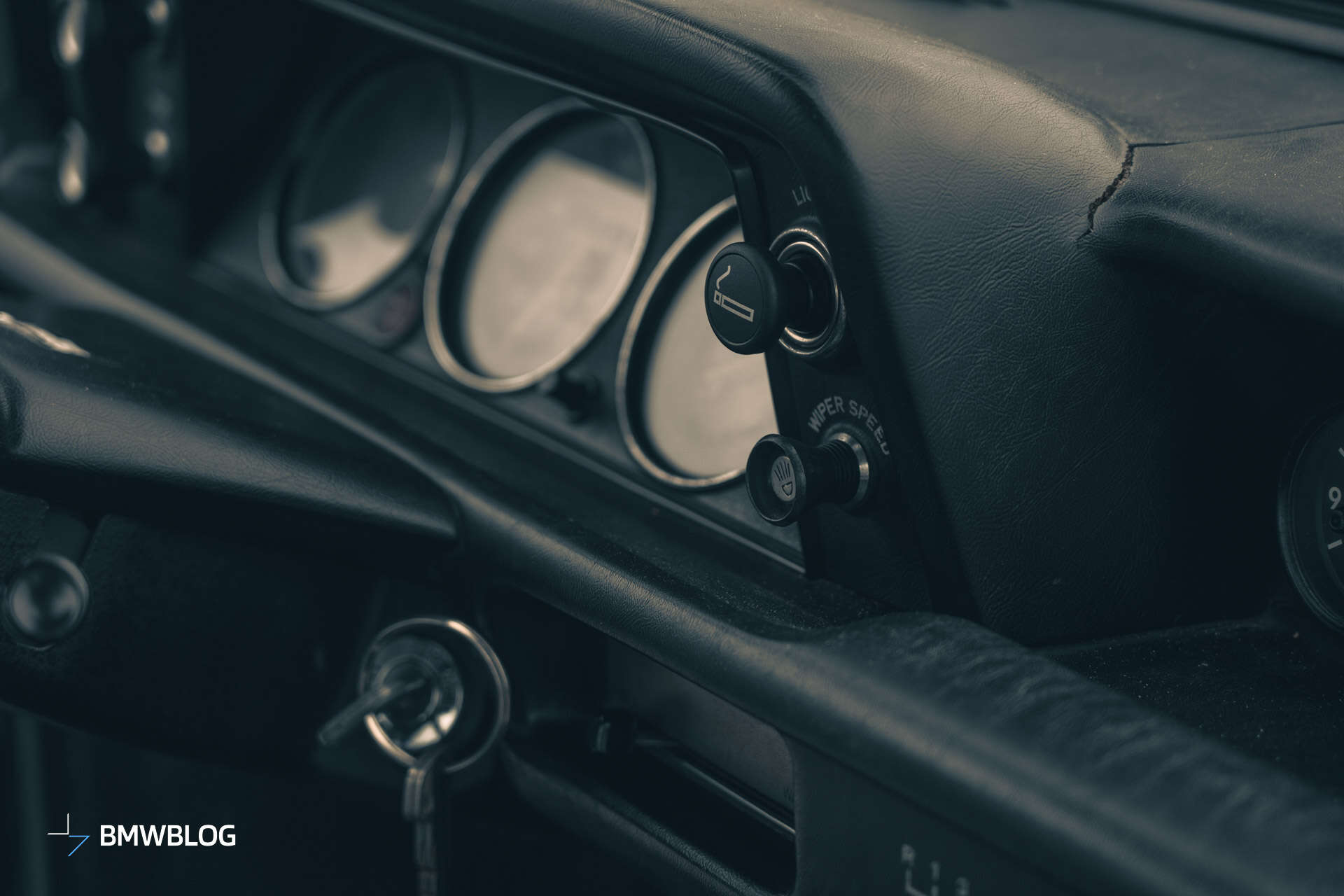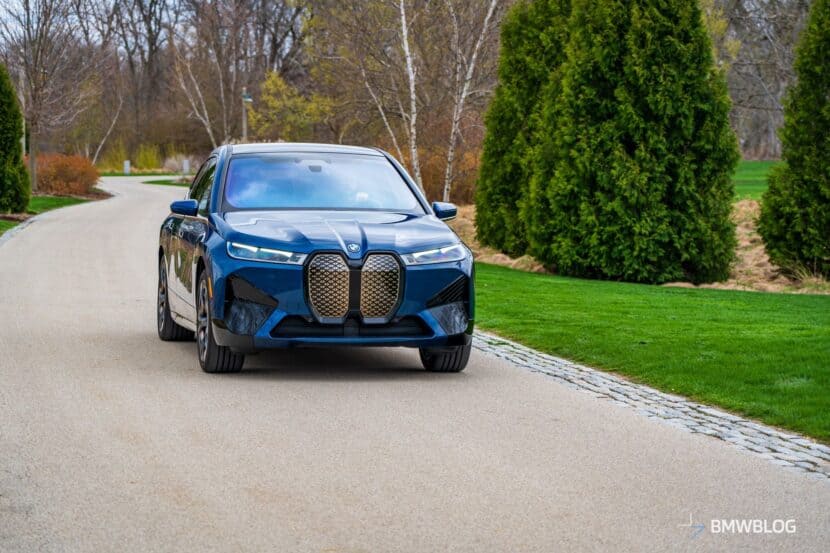Getting behind the wheel of a mint 1972 BMW 2002 tii is an experience few can claim, and one that I recently had the pleasure of at the Targa 66 event held at Homestead Miami. This vehicle, with its price tag of around 12,000 Deutsche Marks in 1972 (equivalent to $4,000 at the time), offers a unique blend of history, rawness and driving pleasure that is extremely rare. This particular 1972 2002 tii was in mint condition and painted in a beautiful Baikal color, a subdued hue of blue which looks classy and premium.
Old School Engineering
With only a couple of hours left before my flight, I am excited to take this classic for a quick spin. BMW of North America hands me the keys and as soon as I step inside, nostalgia kicks in. I got in the driver’s seat and felt the unusual large, three-spoke vinyl steering wheel in my hands. I turned the key and heard the engine roar to life. It sounded like music to my ears. I put it in gear and drove off, eager to see what it could do.
The first thing I noticed was how smooth and responsive the car was. With 140 horsepower and 130 lb-ft of torque at its disposal, the 2002 tii doesn’t just drive—it dances on the road. It’s a combination of raw and old school driving dynamics, with the engine sound coming in unfiltered. Despite the seemingly modest output by modern standards, this car was a powerhouse in its era. It could run to 60 mph in 8.20 seconds and had a top speed of 120 mph. Not bad for a car from the 70s!
The key to its spirited performance lies in the Kugelfischer mechanical fuel injection system, which provides precise fuel metering at all rpm ranges. According to older technical documents, this innovation allowed for aggressive cam timing without compromising the car’s low-rpm driveability. The 1972 2002 tii also has stiffer springs than the regular 2002, front and rear anti-sway bars, larger front disc brakes and wheels.
Traveling Back In Time
I don’t have a direct comparison to the original 2002 since it has been a while I’ve driven one, but on the road, the car’s revised chassis, driveline, and engine components work well together to deliver a very analog engineering package. The 2002 tii’s gearbox, with its closer ratio 4-speed manual transmission, offers a tactile, engaging driving experience. The sweet spot of the engine’s power band lies from about 3500 to 5000 rpm, where the car felt most alive. The gas pedal is quite responsive and the firm brake pedal is another nod to the past before ABS.
There is a slight understeer, characteristic for BMW cars of that era, but when pushed a bit, the rear-end does get looser. Of course, it’s not a neck snapping car, but rather a car with a very smooth and controlled driving experience that’s extremely satisfying. Unfortunately, there were no curvy roads around the Homestead Speedway, aside from a couple fun corners. Therefore, I couldn’t really put the car through its paces, but I can already see this 2002 tii being a lot of fun carving some mountain bends.
Iconic Design
The design inside out is minimalistic and simple with clean shapes. The defining feature of the 2002 tii is the bathtub sill line. This design element, highlighted by chrome trim along the door crease, doubles as the closure line for both the hood and trunk. The small, vertical kidney grilles nod to BMW’s past and heritage. What fascinates me about the 2002 models is the design of the lights. The round headlights and taillights are immediately identifiable as being part of the BMW design language. Naturally, the iconic C-pillar Hofmeister Kink is there.
Inside, leather dominates this airy and classy cabin, giving the 2002 tii a luxurious look. Other than the seat frame, there isn’t much chrome inside this car. Instead, you will find high-quality plastic trims than blend in nicely with the black leather. There is a central clock also which is unique to the tii model.
The fan and lights are operated by knobs, something that I absolutely miss seeing in modern BMWs. The BMW 2002 tii also excels in terms of visibility, thanks to the thin A, B, and C-pillars. It felt nearly impossible to find any blind spots. The rubber-neck shifter boot is also cool.
One of the most compelling aspects of the 2002 models is their historical significance. As a precursor to the modern 3 Series, it sold more than 860,000 units worldwide before being replaced in 1977. And now, BMW is once again ready to make history with a new generation of Neue Klasse models.
Spending a day with the 1972 BMW 2002 tii at the Targa 66 event was not just a test drive; it was an experience—a journey back in time, and a reminder of what makes classic cars so special. The 2002 tii stands as a testament to BMW’s legacy of crafting vehicles that are not only ahead of their time but also timeless in their appeal.








